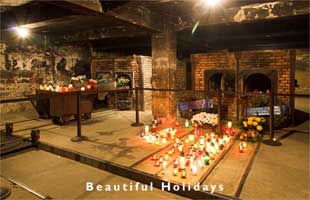Historical Europe Holidays
Beautiful European Holidays


Greece and Rome were once the seats of ancient European civilisations. The best-known remains, the Acropolis and the Parthenon, are respectively in the Greek and Italian capitals. However, the Roman Empire in particular was massively extensive; you’ll find foundations of bathhouses and forts dotted around the entire continent.
After the fall of the Roman Empire and during the rise of the nation-state, castles were built across Europe in the Middle Ages. Some of the most impressive examples are in Wales, England and Scotland; if you want to see a lot of medieval fortresses in a short space of time, then the UK is probably the best bet; UK castles often stick to the classic Norman design of a moat, outer wall and keep. However, Central Europe is also a very good destination for more ornate and fairytale castles – think Prague and Bavaria. There are also numerous important cathedrals and churches that date from this era, like Westminster Abbey and Notre Damme.
Crudely, the Renaissance heralded the beginning of Modern Europe, the development of empires and the growing importance of trade. Florentine art, Baroque architecture in Vienna, Rome and Russia and in numerous palaces across Europe – they’re all top draws for tourism. This was also an important period for Turkey, as it roughly coincided with the expansion of the Ottoman Empire. Istanbul has many fascinating sights from this period, including the Topkapi Palace, and conflict between the European powers and the Ottomans resulted in the spectacular fortifications at Malta.
The historical periods between the Renaissance and the First World War consolidated Europe’s place as the world’s most powerful continent. Much of the grandest architecture in European capitals was build during this period – think the Arc d’Triomph in Paris, the Chain Bridge in Budapest, Buckingham Palace in London, among many others.
However, the vast wealth and rivalry of the European superpowers led to a bloody 20th century – families across the world lost loved ones in the conflicts, and many commemorate them by visiting the areas that they fought or died in. You can visit First World War memorials and the battlefields in Gallipoli and Flanders, among others.
The Second World War was noted not just for conventional war, but for genocide. Obviously they aren’t typical fun holiday destinations, but Auschwitz, Belsen, and Dachau are well worth seeing, because of the need not to forget what happened there and why.
Having fought off the Nazis, much of the East of the continent was then occupied by the Soviets. Most Eastern European capitals have some sort of museum that explains what life was like under Communism. Some are serious, like the Museum of Occupations in Riga, while Grutas Park in Lithuania and Statue Park in Budapest poke fun at the old Soviet oppressors. In Germany, it’s also possible to see sections of the Berlin Wall, and travel the city in a Trabant.
Cities in Europe generally have some sort of discount scheme, where purchasing a card grants entry to museums and historical sights for periods of between 1 – 7 days, and sometimes unlimited use of public transport. Do the maths before you buy, but these can be convenient ways of seeing a lot in a limited time.
Sites are increasingly trying to get visitors to buy audio guides, which provide a pre-recorded commentary of historical facts. These seem like a good idea but, unless you’re massively enthusiastic about a particular attraction, often get boring very quickly – guided tours are much better, or spend your money on kitsch souvenirs!
There are numerous specialist tours that provide trips based around particular historical eras and geographical areas.
